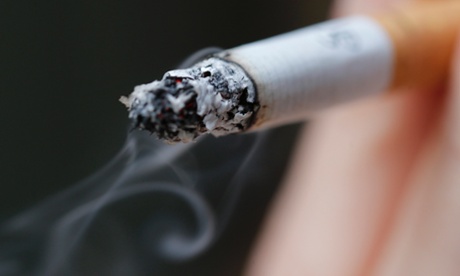
The big science/health news story this week is about cancer rates, with news outlets splashing headlines like “Two-thirds of adult cancers largely ‘down to bad luck’ rather than genes” (for example, here) or “Most cancer types ‘just bad luck’” (here). (I’m not even going to look to see what the Daily Mail has to say about this.) But these headlines, and the stories, are just bollocks. The work, which is very interesting, showed no such thing.
The stories are about a paper just published in Science under the title “Variation in cancer risk among tissues can be explained by the number of stem cell divisions” (here’s the abstract). The authors, Bert Vogelstein and Cristian Tomasetti, straight up tell you that their study explains variation in cancer risk, but it does not explain absolute cancer risk.
Basically, the authors had a neat idea. Cancer is caused by mutations in DNA, and mutations can be caused by, amongst other things, DNA replication. So, the more rounds of replication that DNA undergoes (i.e. the more cell divisions that occur in a particular tissue), the greater the chance of cancer.
To test this hypothesis, the authors analysed data on lifetime cancer risk for 31 types of cancer, and for each one they estimated the rate of cell division. They then plotted these data against each other:
These data suggest there is a relationship between risk of cancer and number of cell divisions. But it says nothing about the proportion of cancers due to cell division.
So where did this two-thirds ratio come from? It is the proportion of variation in the log of the cancer risk that can be explained by cell divisions. But this variation could be the same regardless of whether the baseline risk is high or low. For example, the depth of the water in the Marianas Trench goes up and down with the position of the moon, so this explains a bit of the variation in its depth. But that reveals bugger all about the absolute depth of the trench.
We can see this visually below: in the two data sets, x explains just under 80 percent of the variation. In the black points, x explains more about the absolute risk rates (about 75 percent). But it explains less in the red points (which is about 30 percent, as it happens) because there is much more risk (i.e. more cases of cancer) when x is zero (i.e. it has no effect). So adding some cases to that baseline only increases the total risk by a small percentage.
So, what proportion of cancers are due to bad luck? Unfortunately it’s difficult to tell from the paper. The figure from the paper is on the log scale, and if we extrapolate the model to zero (no cell divisions), we’d see it assumes there is no risk of cancer.
How could we decide how much of the cancer risk is due to bad luck? Well, first, we have to decide what is bad luck, which is an entirely different argument. But after we’ve done that, the only real way to suss out how much of the cancer risk is due to bad luck this is to either estimate the rates at which people get cancer through bad luck, or (perhaps easier) to estimate the non-bad luck rates.
If we stare at the figure from the paper, we can see that this second strategy is used to examine one effect: that of smoking on lung cancer rates. The cancer risk is 18 times higher in smokers than non-smokers. Since roughly 18 percent of the adult US population are smokers (according to the CDC), this suggests that for lung cancer, about 75 percent of the risk is due to smoking (i.e. the extra risk due to smoking is multiplied by the proportion of smokers divided by the total lung cancer risk).
I feel like I need to get all Ben Goldacre on you and bemoan the lack of scientific literacy amongst health journalists. I would simply suggest that the next editor of this newspaper insists that all of its health journalists (and perhaps all journalists of whatever stripe) read Ben’s Bad Science, which is one of the best explanations of how to think statistically that I have read.
Please, journalists, get a clue before you write about science.
.. .. .. .. .. .. .. .. .. .. ..
Bob O’Hara is a biostatisician who conducts research at the Biodiversity and Climate Research Centre (BiK-F) in Germany. In his free time, he writes the blog, Deep Thoughts and Silliness, and tweets from @BobOHara.
GrrlScientist is an evolutionary biologist and science writer. She’s very active on twitter @GrrlScientist and sometimes lurks on social media: facebook, G+, LinkedIn, and Pinterest.

